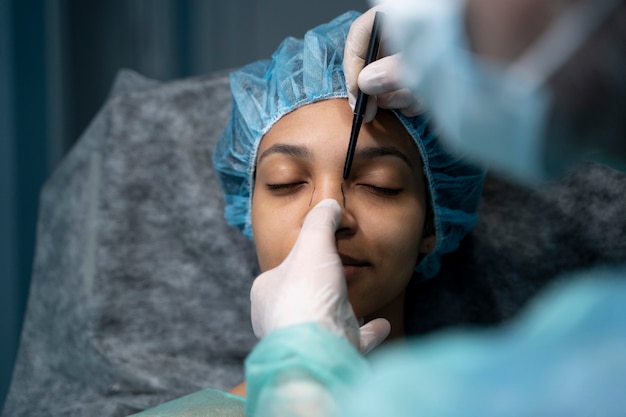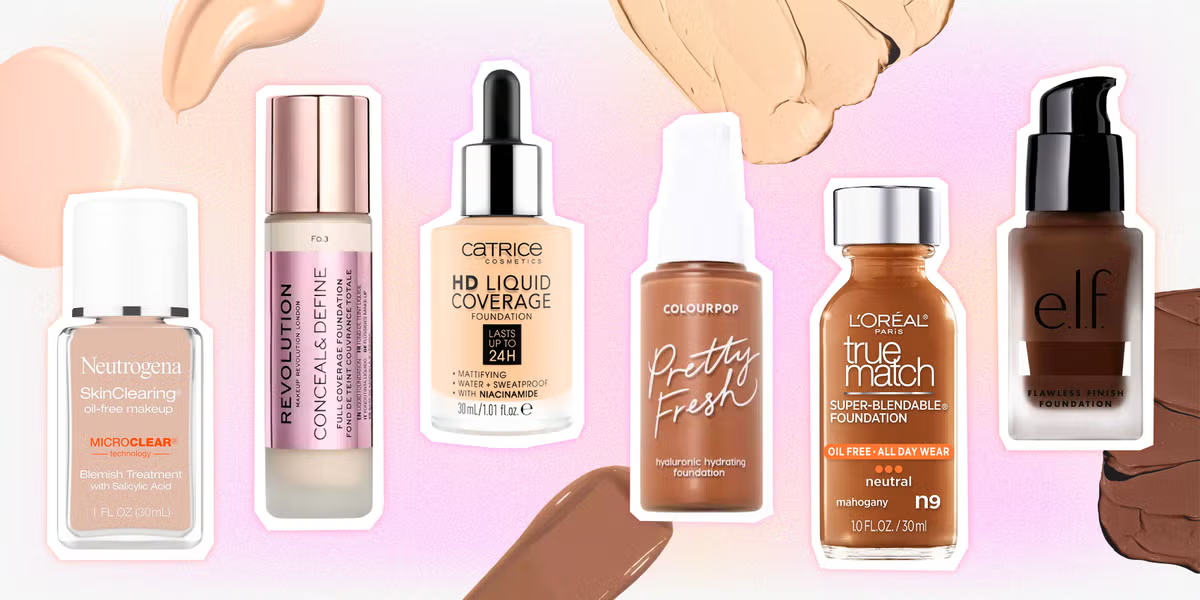Skin
Is Skin Care Essential for Health and Well-Being?

Is Skin Care Essential for Health and Well-Being? Yes, Skin care has evolved into a popular and necessary part of modern self-care. From cleansers and moisturizers to serums and sunscreens, it’s clear that skin care is much more than just a beauty trend. But what exactly does it involve, and why is it important? This article explores the significance of skin care, its role in overall health, and the ways it can improve your skin’s appearance and function. We’ll also address common questions, misconceptions, and best practices for building a solid routine.
Understanding Skin Care: More Than Just Cosmetics
Skin care isn’t just about enhancing beauty. It’s about maintaining the health and functionality of your skin, the body’s largest organ. The skin protects us from environmental harm, regulates temperature, and allows us to sense touch. Therefore, proper care is essential for preserving these vital functions.
When people ask, “Is skin care important?” the answer is unequivocally yes. Like any other part of your body, your skin needs attention and maintenance to stay healthy. Without proper care, it can become dry, irritated, or vulnerable to infections and damage. Even though some may view skin care as purely aesthetic, it plays a crucial role in your overall health.
The Basics of Skin Care
At its core, skin care involves practices that help maintain skin health and appearance. A good skin care routine addresses several key elements, including:
- Cleansing: Removing dirt, oil, and pollutants from the skin.
- Moisturizing: Hydrating and maintaining the skin’s moisture barrier.
- Protecting: Using sunscreen or other barriers to shield the skin from harmful UV rays and environmental damage.
Cleansing helps prevent clogged pores, which can lead to breakouts. Moisturizing keeps the skin hydrated, reducing dryness and irritation. And perhaps most importantly, protecting your skin from UV damage prevents premature aging and decreases the risk of skin cancer. Together, these steps form the foundation of any effective skin care routine.
The Science Behind Skin Care
The skin is a complex organ made up of multiple layers, each with specific functions. The outermost layer, the epidermis, serves as a protective barrier. The dermis, located beneath the epidermis, houses blood vessels, hair follicles, and sweat glands. Beneath that lies the hypodermis, which contains fat and connective tissue.
Proper skin care targets these layers to ensure that the skin can perform its functions optimally. For example, moisturizers often penetrate the outer layer to hydrate the skin, while sunscreen shields the epidermis from harmful UV rays. Anti-aging serums may target the deeper layers, stimulating collagen production to reduce fine lines and wrinkles.
When you invest in skin care, you’re not just pampering yourself—you’re addressing the biological needs of your skin. Consistent care can improve elasticity, reduce signs of aging, and even improve skin tone and texture.
Is Skin Care Necessary for Everyone?
Many people wonder if skin care is necessary for everyone, or if it’s only for those with problem skin. The truth is, skin care benefits everyone, regardless of age or skin type. Each person’s skin has unique needs, and a tailored skin care routine helps meet those specific requirements.
Even individuals with “perfect” skin can benefit from a consistent regimen. Over time, factors like sun exposure, pollution, and natural aging can affect your skin’s health. By taking preventive measures—such as using sunscreen and maintaining hydration—you can keep your skin healthy and vibrant for years to come.
Additionally, those with specific skin concerns, like acne or eczema, can benefit greatly from a routine designed to target those issues. For example, people with acne-prone skin often find relief from using cleansers with salicylic acid or benzoyl peroxide. Meanwhile, those with dry skin may need heavier moisturizers containing ingredients like hyaluronic acid or glycerin.
How Skin Care Affects Mental Health
Skin care doesn’t just benefit your physical health—it can also have a significant impact on mental well-being. A consistent routine can be soothing, offering a sense of control and stability in daily life. For many, the act of cleansing or applying moisturizer is a form of self-care that fosters mindfulness and relaxation.
Additionally, having healthy, clear skin can boost self-esteem. Skin conditions like acne, rosacea, or hyperpigmentation can affect a person’s confidence and body image. Addressing these issues with proper care can lead to improvements not just in appearance but in mental outlook as well.
Feeling good about how you look can enhance your overall quality of life. A glowing complexion often translates into increased confidence, making you feel more comfortable in social and professional settings. As a result, investing in skin care can have far-reaching effects beyond just the physical.
Common Skin Care Myths Debunked
Despite the benefits of skin care, there are plenty of myths that confuse people about what’s necessary and effective. Let’s debunk some of the most common misconceptions:
- “You only need sunscreen on sunny days.”
This is one of the biggest myths. UV rays can penetrate clouds, meaning your skin is exposed to harmful rays even on cloudy or cold days. Sunscreen should be part of your daily routine, regardless of the weather. - “Oily skin doesn’t need moisturizer.”
This couldn’t be further from the truth. Oily skin can still be dehydrated, and when the skin lacks moisture, it may produce even more oil to compensate. Using an oil-free moisturizer can help maintain balance. - “Natural products are always better.”
Just because something is labeled “natural” doesn’t necessarily mean it’s better for your skin. In fact, many natural ingredients can irritate sensitive skin. It’s important to choose products based on your skin’s specific needs, not just marketing labels. - “Expensive products work better.”
Price doesn’t always indicate effectiveness. Many affordable skin care products offer the same benefits as their high-end counterparts. It’s essential to focus on ingredients rather than price tags.
By understanding the facts and ignoring the myths, you can develop a skin care routine that truly works for you.
Is Skin Care Anti-Aging?
One of the most common reasons people invest in skin care is to slow the signs of aging. While aging is a natural process, proper skin care can help minimize its visible effects. Products with antioxidants, such as vitamin C and retinol, help combat free radicals that contribute to premature aging. Retinoids, in particular, are known for their ability to promote cell turnover, reducing the appearance of fine lines and wrinkles.
In addition to topical treatments, daily sun protection is perhaps the most effective anti-aging step you can take. UV damage is a leading cause of premature aging, often referred to as photoaging. By wearing sunscreen consistently, you can prevent sunspots, wrinkles, and loss of elasticity over time.
So, is skin care anti-aging? It can’t stop the clock, but it can certainly slow it down.
Creating a Skin Care Routine: Where to Start
Starting a skin care routine can feel overwhelming, especially with so many products on the market. The key is to keep it simple at first and gradually introduce more products as needed. Here’s a basic routine to get started:
- Cleanser: Choose a gentle cleanser that suits your skin type. Wash your face morning and night to remove dirt, oil, and impurities.
- Moisturizer: Apply a hydrating moisturizer immediately after cleansing to lock in moisture.
- Sunscreen: Wear sunscreen daily, even indoors, to protect your skin from harmful UV rays. Opt for SPF 30 or higher.
Once you’ve established a basic routine, you can add serums or treatments based on your skin’s needs. For example, if you struggle with dark spots, a vitamin C serum might help. If your main concern is wrinkles, consider incorporating retinol.
Remember, consistency is key. It’s better to stick with a simple routine every day than to try too many products at once and risk irritation.
Adapting Skin Care to Your Environment
Your skin care needs may change depending on factors such as climate, age, and lifestyle. For example, colder weather often leads to drier skin, requiring richer moisturizers and hydrating serums. On the other hand, warmer, humid climates might necessitate lighter, oil-free products to prevent clogged pores and excess oil.
Traveling can also impact your skin. Airplane travel, for example, dehydrates the skin due to the dry cabin air. In such cases, using a hydrating mist or sheet mask mid-flight can help maintain moisture levels.
It’s essential to be flexible with your routine and adapt it based on your environment. Pay attention to how your skin reacts and adjust accordingly.
The Role of Diet and Hydration in Skin Care
While skin care products are important, what you put into your body also plays a significant role in your skin’s health. A balanced diet rich in vitamins and minerals can enhance your skin’s appearance. Nutrients like omega-3 fatty acids, found in fish and flaxseed, help maintain the skin’s lipid barrier, keeping it hydrated and supple.
Hydration is equally important. Drinking plenty of water ensures that your skin stays moisturized from the inside out. Dehydration can lead to dullness, fine lines, and flaky skin. By staying hydrated and eating a balanced diet, you’ll boost the effectiveness of your skin care routine.
Conclusion: Is Skin Care Worth the Effort?
In short, yes—skin care is essential for maintaining healthy, vibrant skin. Beyond its aesthetic benefits, skin care helps protect the skin from environmental damage, supports its natural functions, and improves overall well-being. Whether you’re looking to address specific concerns like acne or wrinkles or simply want to maintain a healthy complexion, investing in skin care is a worthwhile endeavor.
By understanding your skin’s needs and sticking to a routine that works for you, you’ll not only look good but feel good too. After all, healthy skin is a reflection of self-care—and that’s something worth prioritizing.
FAQs
Is skin care necessary for everyone?
- Yes, skin care benefits everyone, regardless of skin type or age. A proper routine supports skin health and prevents issues.
How often should I use sunscreen?
- Sunscreen should be worn every day, even when it’s cloudy or you’re indoors. UV rays can still penetrate clouds and windows.
Can skin care products reverse aging?
- Skin care can’t reverse aging, but it can slow the visible signs like wrinkles and sunspots when used consistently.
Are expensive skin care products better than affordable ones?
- Not necessarily. Focus on ingredients rather than price, as many affordable products are just as effective.
What diet changes can improve my skin?
- A diet rich in omega-3 fatty acids, vitamins, and hydration can help support skin health from the inside.
How long does it take to see results from a skin care routine?
- Results vary, but you can typically expect improvements within four to six weeks of consistent use.
Skin
The Rarest Type of Nose: An Exploration of Distinction

The nose, a centerpiece of human physiognomy, stands as a hallmark of individual identity. While its primary functions—facilitating respiration and detecting aromas—are universal, the diversity in nasal forms is both staggering and fascinating. Some nose shapes dominate populations, while others are so rare they elicit wonder. But what, precisely, constitutes the rarest type of nose? Let us traverse the realms of anatomy, genetics, and cultural resonance to uncover the answer.
Anatomy and Variation: The Underpinnings of Nasal Uniqueness
Before delving into the extraordinary, it’s essential to comprehend the fundamental structure of the nose and the elements shaping its distinctiveness.
Structural Components of the Nose
- Nasal Bones: Form the upper bridge, lending foundational rigidity.
- Cartilage: Confers flexibility and shapes the tip and lateral contours.
- Nasal Septum: Divides nostrils, ensuring balanced airflow.
- Soft Tissue: Adds curvature and dynamic movement to the nose.
These elements, influenced by heredity, ethnicity, and environment, orchestrate a nose’s architecture.
Determinants of Nasal Morphology
- Genetic Blueprint: Nasal shape emerges from an intricate genetic interplay.
- Ethnic Adaptation: Ancestral climates mold nasal forms; slender noses prevail in frigid zones, while wider noses dominate humid locales.
- Age and Trauma: Time and injuries can subtly transform nasal aesthetics.
Recognizing Familiar Nose Types
Common nasal shapes abound across global demographics. Understanding these helps us appreciate the uniqueness of rarer forms.
- Roman Nose: Distinguished by a prominent, gently arched bridge; often depicted in classical sculpture, prevalent in European lineages.
- Button Nose: Petite and rounded with a slightly uplifted tip, often evoking youthful charm.
- Straight Nose: A linear bridge devoid of dips or curves, revered for its symmetry.
- Nubian Nose: A broad base coupled with an elongated bridge, celebrated within African diasporas for its striking allure.
- Hawk Nose: This shape exudes boldness, featuring a pronounced downward curve reminiscent of a raptor’s beak.

A rarity in Nasal Forms
Rare nasal configurations arise from genetic anomalies, evolutionary adaptations, or developmental peculiarities.
Noteworthy Rare Noses
- Fleshy Nose: Bulbous with pronounced soft tissue, less prevalent than streamlined shapes.
- Celestial Nose: Marked by a concave bridge and uplifted tip, its rarity lies in the pronounced upward tilt.
- Pinched Nose: A slim and tapered form, occasionally the result of surgical intervention or specific genetic traits.
The Pinnacle of Rarity: Uncommon Combinations
The rarest nose transcends individual traits, merging several uncommon attributes into one visage. For instance, a celestial nose paired with a profoundly sharp tip and exaggerated curvature is exceptionally unusual.
Genetic Conditions Yielding Unique Noses
- Binder Syndrome: Leads to an underdeveloped nasal bridge.
- Pierre Robin Sequence: Affects facial structure, creating recessed nasal features.
Cultural Perceptions of Rare Noses
Societal lenses magnify the significance of rare nose shapes, attributing symbolic and aesthetic value across epochs.
- In Media and Fashion: Unique noses captivate audiences, positioning their bearers as icons of individuality.
- Historic Standards: Ancient Egyptians prized slender noses for their perceived elegance, while Roman society lauded aquiline noses as emblems of authority.
- Contemporary Movements: Social media champions diversity, fostering an appreciation for distinctive features.
Genetics: The Architect of Nasal Rarity
Heredity and Evolution
- Inheritance Patterns: Unusual features often emerge from recessive traits passed discreetly through generations.
- Evolutionary Influence: Narrow noses, adapted for frigid air, and broad noses, efficient in humid climates, showcase humanity’s adaptability.
Surgical Crafting of Rare Noses
Modern rhinoplasty offers the possibility of replicating rare nasal forms, albeit with caution.
- Rhinoplasty Trends: Precision is paramount when emulating rare features.
- Balancing Risks: Overcorrection risks functional issues, underscoring the need for moderation.

Embracing Nasal Uniqueness
Whether common or extraordinary, the nose is a personal signature. Celebrating its individuality fosters self-acceptance and underscores humanity’s rich tapestry of diversity.
Conclusion
The rarest nose type defies singular definition, arising from a confluence of exceptional traits shaped by heredity, environment, and cultural perceptions. Its rarity enriches the spectrum of human beauty, reminding us that uniqueness is a virtue worthy of reverence.
FAQs
- What governs nasal shape?
Hereditary factors, cartilage structure, and environmental influences shape nasal appearance. - Can nasal shape evolve over time?
Yes, age and physical trauma can alter its form. - Are rare noses universally admired?
Attractiveness is subjective; rare noses often gain admiration for their distinctiveness. - Can surgery replicate rare shapes?
Yes, but achieving natural-looking results requires meticulous precision. - What’s the most prevalent nose type?
Button and Roman noses are among the most ubiquitous globally.
Skin
Eczema and Psoriasis on the Feet: Visuals, Root Causes,

Eczema and psoriasis stand among the most prevalent skin disorders affecting individuals across the globe. When these conditions manifest on the feet, they can cause significant discomfort and pose aesthetic dilemmas. This article delves into the origins, manifestations, and remedial options for eczema and psoriasis of the feet, supplemented by illustrative depictions.
Understanding Eczema: How It Manifests on the Feet
Defining Eczema and Its Underlying Triggers
Eczema, medically termed atopic dermatitis, is a chronic dermatological ailment characterized by inflammation, redness, and relentless itching. Common catalysts include allergic reactions, environmental irritants, and inherited predispositions.
Symptoms of Eczema on the Feet
- Parched, fissured skin.
- Reddened and swollen areas.
- Persistent itch, often intensifying nocturnally.
- Formation of vesicles in severe instances.
Visual Representations of Eczema on Feet
Individuals afflicted may observe inflamed, reddened patches or blistering. Imagery frequently aids in accurate visual diagnosis.
Psoriasis: A Chronic Autoimmune Condition with Distinctive Features
What Defines Psoriasis?
Psoriasis emerges as a chronic autoimmune disorder, spurring the overproduction of epidermal cells. This surplus accumulates, forming plaques frequently observed on the feet.
Manifestations of Psoriasis on the Feet
- It thickened, flaky skin.
- Reddish plaques are often veiled with silvery scales.
- Painful fissures or cracks in the skin.
- Nails may exhibit changes indicative of nail psoriasis.
Visual Evidence of Psoriasis on Feet
Typical depictions reveal heavily scaled skin with a silver-tinged overlay, highlighting the distinctiveness of this condition.

Differentiating Between Eczema and Psoriasis
Key Visual Contrasts
- Eczema: Features redness, oozing vesicles, and pronounced itchiness.
- Psoriasis: Exhibits dry, flaky plaques with silvery layers.
Diverging Etiologies
Eczema is often rooted in allergic hypersensitivity, whereas an autoimmune response drives psoriasis.
Treatment Modalities for Eczema and Psoriasis
Managing Eczema
- Moisturizing Agents: To counteract dryness.
- Topical Corticosteroids: For reducing inflammation.
- Allergen Avoidance: Identifying and steering clear of triggers.
- Natural Remedies: Coconut oil or colloidal oatmeal baths for soothing relief.
Treating Psoriasis
- Topical Applications: Corticosteroids or Vitamin D derivatives.
- Phototherapy: Exposure to UV light.
- Systemic Medications: Biologics or oral therapies for advanced cases.
- Home Solutions: Aloe vera or saline baths to ease symptoms.

Preventive Strategies for Eczema and Psoriasis on Feet
Skincare Routine
- Daily hydration with emollients.
- Use of gentle cleansers to avoid irritation.
Avoidance of Triggers
- Wearing breathable footwear.
- Mitigating stress, a known exacerbator of psoriasis.
Conclusion
Eczema and psoriasis affecting the feet can profoundly impact the quality of life. Through precise diagnosis, bolstered by visual indicators, and effective treatments, sufferers can find substantial relief. Consistent skin care and proactive avoidance of known triggers are indispensable in preventing recurrences.
FAQs
- How does foot eczema differ from fungal infections?
Eczema often presents as redness and dry skin, while white patches and a pungent odor typically mark fungal infections. - Can children develop eczema or psoriasis on their feet?
Yes, eczema is especially common among younger individuals. - What is the typical duration for treating foot psoriasis?
Treatment timelines vary based on severity, with chronic cases requiring long-term management. - Is it possible to have both eczema and psoriasis concurrently?
Although rare, it is feasible to experience both conditions simultaneously, necessitating distinct treatment plans. - Is there a definitive cure for psoriasis?
While psoriasis cannot be eradicated, its symptoms can be effectively managed through appropriate interventions.
Skin
Best Drugstore Foundations for Oily Skin and Full Coverage

Finding the perfect foundation for oily skin, especially with full coverage, can feel like a tall order. Luckily, drugstores offer a treasure trove of affordable options that provide a flawless finish and extended wear without excess shine. For those with skin prone to oiliness, choosing a foundation that balances lightweight coverage with oil control is essential. Here’s a guide to help you discover the best pharmacy foundations for oily skin that also deliver comprehensive coverage.
Why Oily Skin Requires Specialized Foundation Care
Oily skin naturally produces more sebum, which can reduce the longevity of makeup and create unwanted shine throughout the day. Selecting an unsuitable foundation can exacerbate these issues, leading to a heavy sensation, undesirable gloss, and even clogged pores. Opting for a foundation tailored specifically to with full coverage capabilities, allows you to mask imperfections while maintaining a lasting matte finish.
Key Considerations for Selecting the Best Foundation for Oily Skin
- Matte Finish: Essential for reducing shine and managing excess oil production.
- Long-Wearing Formula: Ensures your look holds up throughout the day.
- Non-Comedogenic Composition: Helps prevent breakouts by keeping pores clear.
- Adjustable Coverage: Allows for a customizable finish without overburdening the skin.

Top 5 Drugstore Foundations for Oily Skin and Full Coverage
1. L’Oréal Infallible Pro-Matte Foundation
L’Oréal’s Infallible Pro-Matte Foundation is renowned for its matte effect and long-lasting wear. Its lightweight, breathable formula offers adjustable coverage that conceals flaws without clogging pores. With a smooth texture and easy application, it’s perfect for those seeking full coverage minus the heavy feeling.
Key Features:
- Long-lasting matte finish.
- Non-comedogenic formula.
- Maintains coverage even in hot or humid conditions.
2. Maybelline Fit Me Matte + Poreless
The Fit Me Matte + Poreless is a popular, budget-friendly option among individuals with oily skin. Its formula is crafted to minimize pore visibility and control shine throughout the day. This foundation adapts to various skin tones, offering buildable coverage that ranges from light to medium.
Key Features:
- Lightweight, non-greasy texture.
- Shine control for a natural matte look.
- Extensive shade range to suit all skin types.
3. Revlon ColorStay Foundation for Combination/Oily Skin
The Revlon ColorStay Foundation is a top choice for those seeking full coverage with an immaculate finish. Formulated for combination with oily skin types, it provides up to 24 hours of wear without compromising comfort. With added mattifying agents, it absorbs excess sebum, ensuring a smooth, shine-free complexion.
Key Features:
- Full coverage with a matte finish.
- Water and sweat-resistant.
- Long-wearing, transfer-resistant formula.
4. NYX Can’t Stop Won’t Stop Foundation
NYX’s Can’t Stop Won’t Stop Foundation offers high coverage with a lasting matte effect. Its lightweight, non-comedogenic formula is ideal for oily skin, helping to keep an even, shine-free tone. Available in an extensive shade range, it’s perfect for those looking for customizable coverage with effective oil control.
Key Features:
- Lightweight formula suited for oily skin.
- Wide variety of shades for a precise match.
- Designed to hold up all day without retouching.
5. Covergirl Clean Matte BB Cream for Oily Skin
While technically a BB cream, Covergirl’s Clean Matte provides excellent coverage in a light, comfortable formula. Its mattifying composition controls shine without blocking pores, making it a great option for a natural yet polished look. Ideal for days when you prefer lighter makeup while still covering blemishes.

Key Features:
- Oil-free formula to minimize shine.
- Suitable for sensitive, acne-prone skin.
- Buildable light to medium coverage.
Tips for Perfect Foundation Application on Oily Skin
- Prep Your Skin: Cleanse and moisturize with oil-free products before applying makeup. Proper skin care aids in prolonging foundation wear.
- Use a Mattifying Primer: Primers specifically for oily skin help control oil production and extend foundation longevity.
- Apply in Thin Layers: Avoid a cakey effect by applying foundation in thin layers. Add more only where needed for extra coverage.
- Set with a Translucent Powder: Use a mattifying powder to lock in the foundation and reduce shine. Translucent powders are ideal for achieving a natural finish without adding color.
- Finish with a Setting Spray: A setting spray can add extra hold, perfect for long days or special events.
Conclusion
Finding the right foundation for oily skin and full coverage doesn’t have to break the bank. Drugstores offer a range of high-quality options tailored to the unique needs of oily skin. By selecting the right product and following a few key application techniques, you can achieve a lasting, matte, and shine-free look throughout the day. Experiment with different options to find the perfect match for your skin type and coverage preferences.
-

 Skin9 months ago
Skin9 months agoNatural Oil-Free Face Moisturizer Reviews & Buyers Guide
-

 Hair9 months ago
Hair9 months agoDoes a Flat Iron Kill Lice? Fact or Myth?
-

 Hair3 weeks ago
Hair3 weeks agoDoes a Flat Iron Kill Lice? Fact or Myth?
-

 Skin8 months ago
Skin8 months agoAbout Face Beauty: Tips for Enhancing Your Natural Beauty
-

 Hair9 months ago
Hair9 months agoFunction of Beauty: Personalized Hair Care for Your Unique Needs
-

 Hair9 months ago
Hair9 months agoTitanium Flat Iron vs. Ceramic
-

 Skin8 months ago
Skin8 months agoBeautiful Nails: Tips and Tricks for Healthy and Gorgeous Nails
-

 DIY Cosmetics8 months ago
DIY Cosmetics8 months agoEmpire Beauty School:
